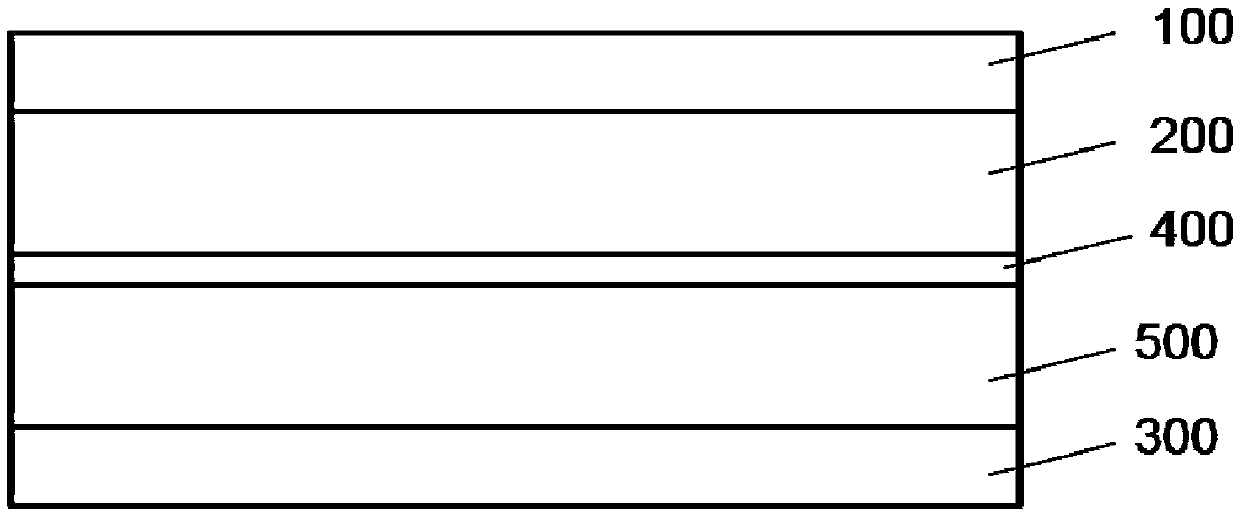Benzodithiophene polymer, its preparation method, semiconductor composition containing it, and solar cell using it
A technology of benzodithiophene and polymer, which is applied in the field of polymer solar cells and solar cells, can solve the problems of low electrode pair carrier collection efficiency, low carrier mobility, and insufficient photoelectric conversion efficiency of polymer solar cells advanced questions
- Summary
- Abstract
- Description
- Claims
- Application Information
AI Technical Summary
Problems solved by technology
Method used
Image
Examples
Embodiment 1
[0119] (1) Synthesis of 2,4-dioctylthiophene
[0120] Synthetic route such as image 3 Shown, concrete reaction steps and technique are as follows (n-C among the figure 8 h 17 for n-octyl):
[0121] ①Add 19.6g, 0.1mol of 5-octylthiophene and 17.8g, 0.1mol of N-bromosuccinimide (NBS) to 150ml of N,N-dimethylformamide (DMF). The initial reaction temperature was 0°C, and as the reaction progressed, the reaction system was heated to 25°C within 2 hours. Then 100 ml of deionized water was added to the system to stop the reaction. The reaction liquid was extracted twice with diethyl ether, and after the solvent was evaporated to dryness by rotary evaporation, the remaining liquid was vacuum-dried to obtain 24.3 g of the product. The yield in this step was calculated to be 88%.
[0122] Characterized by NMR, the results were 1 HNMR (CDCl 3 ,400MHz),δ(ppm):δ6.84(d,1H),6.53(d,1H),2.74(t,2H),1.65(m,2H),1.31(m,10H),0.89(t, 3H), which indicated that the above product was 2-bromo-...
Embodiment 2
[0137] (1) Synthesis of 2,3-dioctylthiophene
[0138] Synthetic route such as Image 6 Shown, concrete reaction steps and technique are as follows (n-C among the figure 8 h 17 for n-octyl):
[0139] ①Add 19.6g, 0.1mol of 5-octylthiophene and 17.8g, 0.1mol of N-bromosuccinimide (NBS) to 150ml of N,N-dimethylformamide (DMF). The initial reaction temperature was 0°C, and as the reaction progressed, the reaction system was heated to 25°C within 2 hours. Then 100 ml of deionized water was added to the system to stop the reaction. The reaction liquid was extracted twice with diethyl ether, and after the solvent was evaporated to dryness by rotary evaporation, the remaining liquid was vacuum-dried to obtain 24.3 g of the product. The yield in this step was calculated to be 88%.
[0140] Characterized by NMR, the results were 1 HNMR (CDCl 3 ,400MHz),δ(ppm):δ6.84(d,1H),6.53(d,1H),2.74(t,2H),1.65(m,2H),1.31(m,10H),0.89(t, 3H), which indicated that the above product was 2-bromo-...
Embodiment 3
[0153] (1) Synthesis of 2-ethyldecylthiophene
[0154] Synthetic route such as Figure 9 Shown, concrete reaction steps and technique are as follows (n-C among the figure 8 h 17 for n-octyl):
[0155] ①Add 0.1mol of thiophene and 0.1mol of N-bromosuccinimide (NBS) to 150ml of N,N-dimethylformamide (DMF). The initial reaction temperature was 0°C, and as the reaction progressed, the reaction system was heated to 25°C within 2 hours. Then 100 ml of deionized water was added to the system to stop the reaction. The reaction liquid was extracted twice with diethyl ether, and after the solvent was evaporated to dryness by rotary evaporation, the remaining liquid was vacuum-dried to obtain 23.8 g of the product. The yield in this step was calculated to be 85%. NMR characterization showed that the above product was 2-bromo-thiophene.
[0156] ② Under the protection of inert gas, add 0.36mmol catalyst n-butyllithium and 30mmol 2-bromothiophene into 50ml THF together. 18 ml of 1-...
PUM
 Login to View More
Login to View More Abstract
Description
Claims
Application Information
 Login to View More
Login to View More - R&D
- Intellectual Property
- Life Sciences
- Materials
- Tech Scout
- Unparalleled Data Quality
- Higher Quality Content
- 60% Fewer Hallucinations
Browse by: Latest US Patents, China's latest patents, Technical Efficacy Thesaurus, Application Domain, Technology Topic, Popular Technical Reports.
© 2025 PatSnap. All rights reserved.Legal|Privacy policy|Modern Slavery Act Transparency Statement|Sitemap|About US| Contact US: help@patsnap.com



